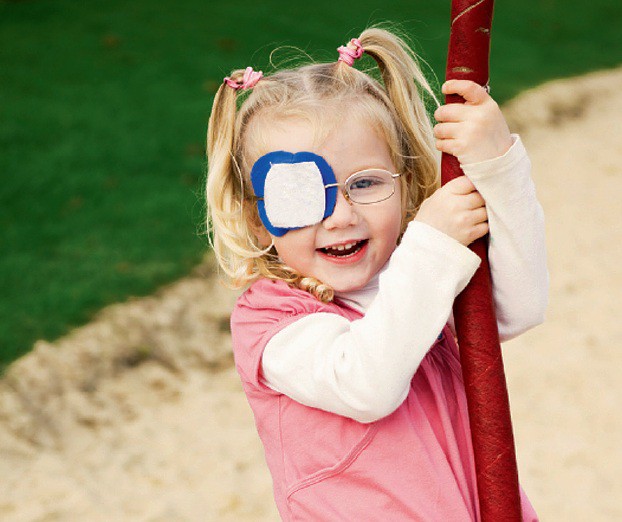Amblyopia
Definition
Amblyopia (lazy eye) - is impaired vision in one or two eyes which cannot be corrected using glasses, contact lenses and which is not related to structural changes in the eye.
In order to create a feeling of vision, eyes and brain must work as a united team. A ray of light gets into the eye, goes through its optic system as a nerve signal and gets to the brain. Amblyopia is a condition when sharpness of vision is decreased, as due to various reasons the cooperation of the eye and brain is impaired. The eye may look normal, but it is not engaged properly, as it is easier for the brain to perceive the information sent by the other eye, as a result, the part of the brain related to this eye starts to "get lazy" (does not develop).
Frequency
Ambliopia is the most common reason for impaired vision in children, and the most common reason for impaired vision in adults under 30, among vision-related issues caused by injuries and other eye diseases. It affects 2-4% of people.
Causes
Any cause that hinders the eye to perceive a clear picture during the critical period of vision development (since birth to the age of 7 years). The most common causes of ambliopia are:
- permanent heterotropia of one eye;
- particularities of ray refraction in the eye;
- opacity of transparent structures of the eye (e.g., cataract, corneal scars);
- upper eyelid droop;
- more rarely - issues related to the optic nerve, retina, CNS, etc.
If one eye sees a clear picture, but the other one - blurred, the brain starts "ignoring" the blurred picture, and it can result in irreversibly poor vision in this eye. In adult people the vision in the "lazy eye" cannot be corrected using glasses, contact lenses or refractive surgery.
Diagnostics
The paediatric ophthalmologist examines the vision in both eyes, evaluates ray refraction properties, fixation stability, symmetric properties and structural properties of the eye, which allows to diagnose the ambliopia and start treatment in due time.
Treatment
The eye which sees better is closed (occlusion) or the vision is blurred using pupil dilating drops in order to prevent the cause of ambliopia and make the lazy eye to watch more. The duration of occlusion is determined by the ophthalmologist, and it depends on the child's age and degree of ambliopia.
Why are early diagnostics and treatment so important?
The first years of life are the most important for development of the vision system. After the age of 8-9 years the part of the brain responsible for the vision perception is fully mature. It cannot develop any more. If ambliopia is not cured until this age, the child will have poor vision all his life. It will be impossible to correct using occlusion, glasses or surgical treatment. The earlier the treatment is applied, the better and faster are the results.





